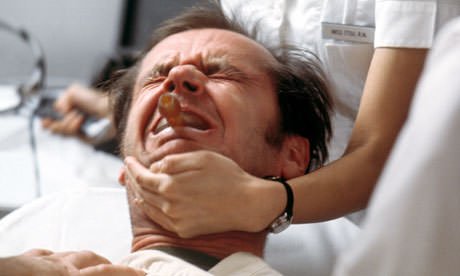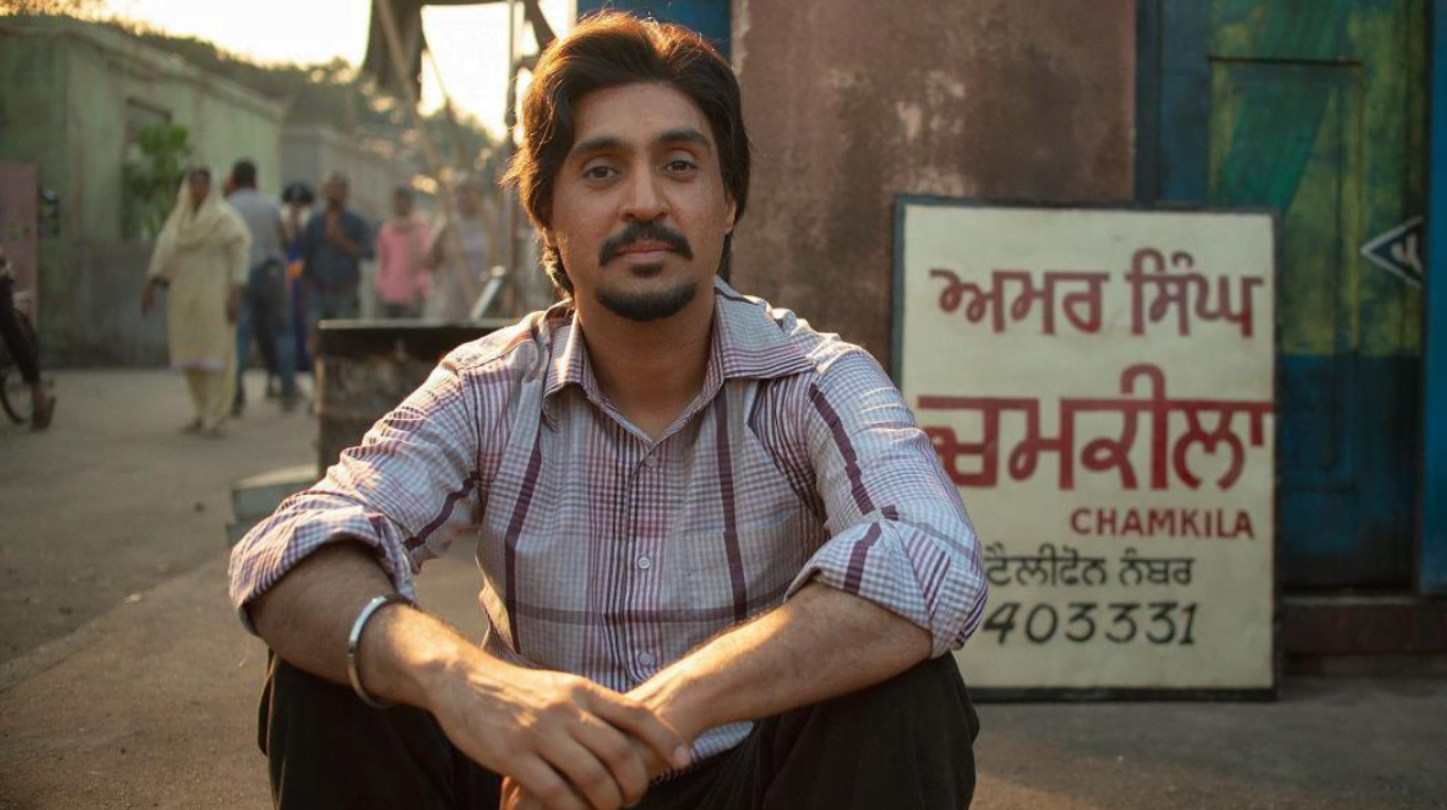On an average day do you talk about mental health? But we do see discussions or depictions of mental health very often, especially from cinema. How often do we think that the depiction of mental health in films are factual?
In a suspense thriller, one can often see a popular technique. A great twist is revealed at the end to shock people and make the audience gasp. Mostly what this twist does is brings up a ‘mental health’ context. If you read Stephen King novels or watch Hitchcock films or even watch most of the popular thrillers having a great twist, then one thing that you’ll observe is the hero or villain, suffering from either schizophrenia or dissociative identity disorder. The problem is not with the twist or the usage of mental illness in the context of the story but the portrayal of the characters and how they are vilified.
For example in Hide and Seek (2005), a psychiatrist has to shoot a mentally challenged man dead, but we as the audience know that his illness is not his fault. Now, we can only imagine how it is to be clinically depressed or be diagnosed with other forms of mental illness, especially in a society where mental illness is such a stigma.
Recently, a friend of mine called me up to say that his neighbour, a 25-year-old woman, is suffering from clinical depression. He wanted me to help her locate a good psychiatrist from Kochi, even though she herself is from Kollam.
most films and novels glorify the stigma and aversion people have towards people living with mental illness.
Why would someone from Kollam want a psychiatrist in another city? It turns out that her marriage had been finalised quite recently and she didn’t want her parents to know that she was suffering from depression. The reason why she was able to confront her inner problems is because of Deepika Padukone coming out with her depression. I was extremely glad to hear that she is fighting back but sad to hear that she has to hide her illness and treatment due to the ‘extra‘ pressure that she might have to confront. To her, Deepika Padukone’s voice mattered, thereby reflecting the power that celebrities possess to influence the common masses with their lifestyle and actions.
Also Read: Mental Health Issues: An Elitist Problem?
But the scenarios shown in most films and novels only glorify the stigma and aversion people have towards people living with mental illness, thereby making an individual believe that mental illness is ‘abnormal‘ and hence having it should make you feel insecure and vulnerable. This realisation has made me question my fondness towards the films and books which I appreciated earlier.
So, how badly does cinema misrepresent mental health issues? Is it as bad as the representation and further propagation of gender-based violence? I was watching a popular Malayalam film named Charlie (2015). The film is about a happy-go-lucky man, Charlie (Dulquer Salmaan) who brings happiness and positivity in people’s lives. One of the key moments from the film is Charlie rescuing a woman named Kani (Aparna Gopinath), who is a doctor, from committing suicide.
Kani confesses that she underwent depression when her live-in partner broke up with her. It prevented her from performing a surgery properly, thereby leading to the death of a 10-year-old girl. The subsequent media attention and her miscarriage hurt her mentally, due to which she succumbed into deeper depression.
Kani evenually overcomes her depression after a sojourn to the hills upon the insistence of Charlie. But is that how depression is overcome in reality? I remember my father, a doctor, telling me, ‘Don’t they understand what depression is like? Depression needs to be treated, and might require medication’. Charlie’s attitude towards Kani, in the film bore a stark resemblance to this video by All India Bakchod.
Also Read: Med-Me-Not – Why The Stigma Against Medicines For Mental Illness?
What is clinically defined depression? According to American Psychiatric Association, depression (major depressive disorder) is a common and serious medical illness that negatively affects how you feel, the way you think and how you act. Fortunately, it is also treatable. Depression causes feelings of sadness and/or a loss of interest in activities once enjoyed. It can lead to a variety of emotional and physical problems and can decrease a person’s ability to function at work and at home.
people who suffer from mental illness are portrayed as a blip in society.
The movie Lights Out (2016) portrayed symptoms of depression in a more realistic manner through the character Sophie (Maria Bello) and the necessity for medical treatment of depression. The climax of the film, even though criticised, shows what might happen if the person doesn’t undergo proper treatment and therefore highlights the necessity of care for the individual.
Popular Netflix show 13 Reasons Why (2017), in the context of mental health, shows Hannah’s (Katherine Langford) depression, but the misrepresentation is due to the fact that the show focused on the contribution of a third person in Hannah’s suicide rather than on her mental health.
Aashiqui 2, another Bollywood blockbuster, glorified suicide, when Rahul Jaykar (Aditya Roy Kapoor) killed himself so that he isn’t an obstacle in his girlfriend Aarohi’s (Shraddha Kapoor) career. Unable to handle his girlfriend’s success and his own downfall, Rahul becomes depressed to such an extent that he resorts to alcohol for warmth. Realising his alcoholism is pulling Aarohi down along with him, he finally decides to commit suicide. What’s even further misleading is when his friend taunts Aarohi saying that ‘He died so that she could live’, thereby disregarding his friend’s mental health and sobriety.
The film was lauded for being an epitome of romance, but the message that the film highlights is that alcoholism and depression got the better of him and hence it was better to take him out of the equation for Aarohi to live and prosper. Thus, mental illness and people who suffer from it portrayed as a blip on the surface of the society, who should be gotten rid of, and preferably they should realise that by themselves.
Mental illness should not be treated as comic relief.
Malayalali films have featured stereotypical comical situations involving mental patients. The film Ulladakam (transl. “Content“) (1991) shows a character, played by Jagathy, suffering from schizophrenia. His situation is made fun of and he is ‘psychologically’ treated. He relapses when he couldn’t be convinced of the treatment.
A prominent psychiatrist said that such treatments are never advised and the patient should be given medication. He added that the the comical context of the scene was quite distasteful.
Manichitrathazhu (transl: “Ornate Lock“) popularly known by it’s Bollywood version, Bhool Bhulaiya, involves an infamous scene where Dr. Sunny, a psychiatrist played by Mohanlal, says ‘vattu case’ (transl: “crazy man”) and holds a guy against the wall, saying that he needs to be ‘controlled and locked’. When I saw the scene initially, I thought to myself, is this how psychiatrists are trained, to use ableist language on their patients?
Another scene from the film involves him teasing a schizophrenic patient Kaatukarumban (Kuthiravattom Pappu) suffering from Post Traumatic Stress Disorder (PTSD), saying that he shouldn’t touch the water as it is bad for him. He exclaims ‘vellom!’ (transl: “water”) and the guy jumps to avoid water. It is meant to be the funniest scene from the movie but I found the scene cringeworthy. Mental illness should not be treated as comic relief.
Several films have shown Electro Convulsive Therapy (ECT) treatment inaccurately.
Malayalam film Ezra (2017) depicts evil spirit ‘Dybbuk’ locked in a box. As per an exorcist, the dybbuk will possess a person whose mind and body are not aligned, mostly babies and the mentally ill. Later on, the dybbuk possesses a particular character because he encountered depression when he was a child. This narrative was challenged and in many ways problematic as it literally means ‘mentally ill’ are susceptible to evil spirits.
Oscar-winning film One Who Flew Over the Cuckoo’s Nest (1975) depicts electro-convulsive therapy (ECT) wrongfully. The character played by Jack Nicholson is given shock therapy when he is fully awake and he is shown to writhing and spasming with pain. As per The Telegraph, the Royal College of Psychiatrists say that “The depiction of the treatment in that film is completely over the top, with the patient being held down, writhing in pain, as he is electrocuted. This is not what happens. For a start, during ECT the patient is anaesthetised and given a muscle relaxant – which has been the case since the fifties – to ensure they feel no pain at all. No one is ever forced to have ECT, and when antidepressant medication isn’t working, it can be life-saving”.
Also Read: Beyond Celebrities: Talking About Mental Illness in India
Late actress Carrie Fisher, who suffered from bipolar disorder said that she underwent ECT to cure her depression. She mentioned in an interview with Oprah Winfrey “Have you seen One Who Flew Over The Cuckoo’s Nest? It is nothing like that. I was given anesthetic. It helped to break the cement in my head”. Several Indian films, Classmates (2006), Puthiya Mugam (2009) etc showed this treatment in a wrong way. In Akira (2016), the process of silencing Akira (Sonakshi Sinha) involved giving her ECT when she is fully awake.
But then there are films which actually understand and depict the experience just like it is in reality. The uplifting end of the Oscar-winning film A Beautiful Mind (2001) is a voice for those with schizophrenia. There is no permanent cure for schizophrenia and John Nash lives his life the best way he could with the help of his wife Alicia. Oscar-nominated film Silver Linings Playbook (2012) shows an accurate depiction of bipolar disorder through Pat (Bradley Cooper) and the necessity for him to take medication and to explore more in life. However, the dialogues making fun of his father’s Obsessive Compulsive Disorder (OCD) is less impressive.
Also read: A Feminist Reading Of Dear Zindagi
As mentioned in several popular media, films play a major role in our society and characters from films are seen as role models for individuals within the society. So when a healthy message is portrayed, it can make a huge difference.
Featured Image Credit: Elite Daily





